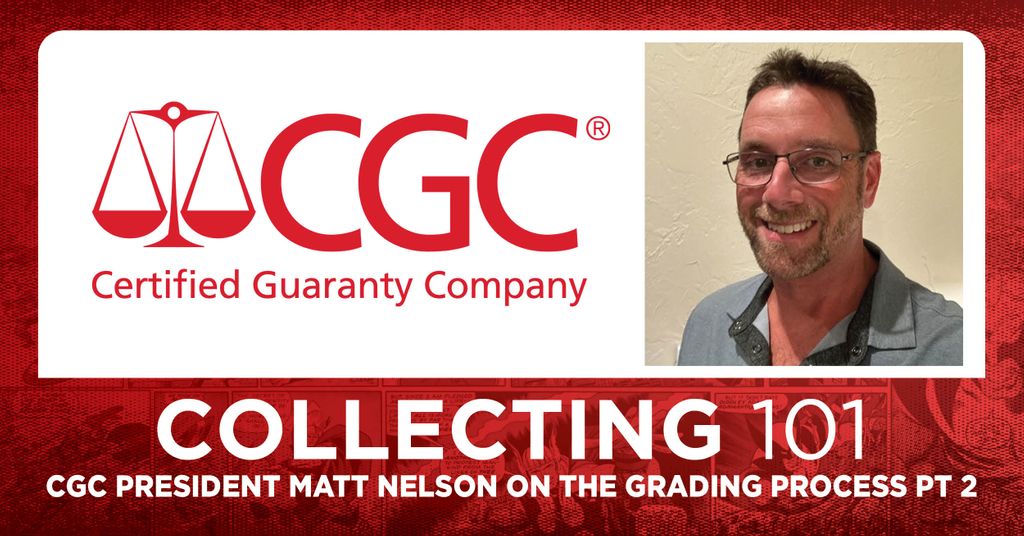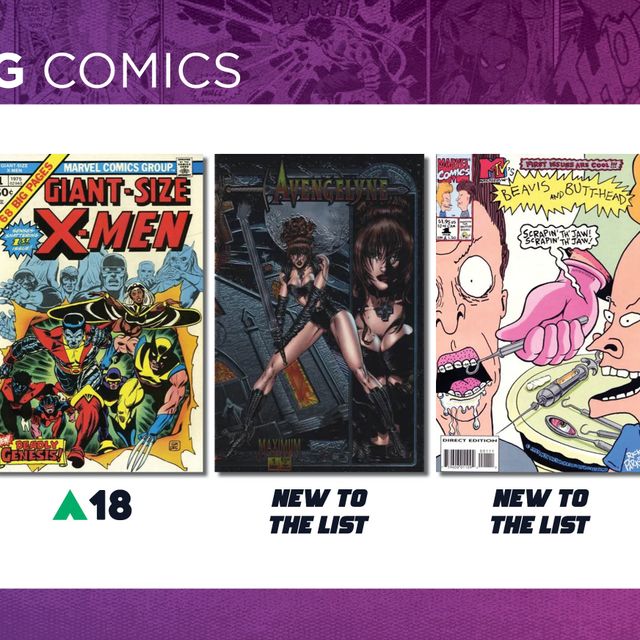
I. Matt Nelson on Shift in Customers
Matt opened up about the changing CGC customer base. This is something most people should realize is also occurring in the comic book marketplace.
"When CGC opened 20 years ago... 99% of our, well, maybe 90% of our submitters, were seasoned collectors and dealers who knew how to grade and they knew what they were getting into with CGC. Well, it's changed over the last 20 years. Now there's been a shift, where a lot of new collectors are coming in that know the CGC product. They've never held them, they never held the book, and they certainly don't know how to grade the book. So they depend on these grading standards."
II. Driving Force of Comics
"The market has shifted, not just for grading. The values of comics have skyrocketed (because of) all the movies and all the stuff going on culturally. That's great because not only are there years and years ahead of us and great movies and television shows and products, but all the kids are watching these shows now. They've been watching them for the past 20 years (and) those kids are going to be the future of the market in one, two, three, four decades."
III. The Importance of Children to the Future
"They're going to be the ones growing up and coming back and buying this stuff. That interest level transcends grading and valuation today, because ... a great book like a Spidey #1 or Batman, or whatever it is that your kids are excited about today, that's going to really hold its value. That is going to be a great investment for the future."
IV. Benefits of Auction Houses
I emphasized to Matt Nelson that I was going to submit these books on my own on behalf of several anonymous collectors I know. I did ask Matt about when there were benefits to using a third-party dealer or auction house. This was his reply...
"There is the rare instance where somebody finds a collection and they're like, Oh, this is great, I want to sell this. I want to maximize my money. I know about CGC, let me send them off and then once I get them back, I'll sell them. Obviously, they can't pay the bill. A lot of times, people will go to auction houses or dealers to sell their stuff. There are certain auction houses that will actually take care of the fees upfront for the customer. So, let's say if you can send your collection to an auction house, they will use their relationship with us. They'll arrange for the books to be submitted to us (and) arrange for payment. All of that will be backed out of the commission that they charge the customer on the back end so the customer never has to cut a check."
V. Pressing the Graded Books
In my experiment, I am dealing with only raw books. I asked Matt Nelson if there was a way to tell if books were pressed that were already graded. He mentioned that instead of going through the pre-screening raw books go through, a sister company of CGC had another service that hobbyists may want to consider. He explained it as such:
"...basically you send your books in already graded and we check them through the holder to see if pressing would benefit the book and there's a shot of upgrade with pressing. So it's kind of a screening before the pressing even takes place. The suggestions that we make are estimates, and typically if you send in, say, 10 books and we pick out five of them for press candidacy, (the) success rates are pretty good. Usually it's like 50% or higher. Sometimes it's as high as 75% or even close to 100%, just really depends on the candidacy of the books themselves.
We look for things like bends and folds and whatever was in the notes on the book when it was graded the first time. So you do have an option, which is especially valuable on more expensive books because, obviously, the fees and risks are much higher. So in those cases, it's very important to use the screening process at CGC.
I have heard of investors and collectors who crack the slabs open and take a gamble on having these books regraded. This seems like a mistake when you can pay a small fee and have the people actually grading the books screen them to see if regrading is warranted.
VI. Matt Nelson on Raw versus Graded for Experiment
I asked Matt Nelson what books I should really target buying raw and have graded for this experiment to achieve success.
"...when you're talking about modern books, cheaper books, $100 to $500 range... I would go with option one (buying raw), which is, you know, trying to save some margin there."
VII. Examples of High Dollar Books that are Exception to Rule
Matt Nelson came up with a great example of a modern high-dollar book that he indicated might be an outlier to the guidance he suggested in the previous section. This is an example of a book you might be better to find raw than buy slabbed.
"...There are even modern books today that are fetching thousands of dollars. So it's not central to aging anymore. A Spidey 300 (Amazing Spider-Man #300), is a perfect example. Traditionally, that book was worth $500, $1000. I think it crept up to $1200 or $1500 for a 9.8. Now, they're fetching, I don't know, $5,000 in 9.8. So here's a book, it's brand new; it's easy to find; it's out there and it's conceivable that that book would be for sale at a show or on eBay raw and it could be a 9.8, right? That's a $5,000 book."
VIII. More?
I have more that I can cover from my interview wth CGC President Matt Nelson. Some additional topics he covered were:
- Insight on the CGC grading standards;
- Books to avoid buying raw;
- Reasons some dealers may not want to grade books that are for sale;
- Possible future CGC offerings if people express interest;
- Issues of risk of loss most people do not consider when sending books to CGC;
- Mistakes people make when sending books into CGC that could cause problems;
- The importance of the census numbers most people miss;
- And a few more topics.
In the upcoming weeks, I will be moving on with the experiment so that we can all gain a further understanding of the grading process.
Let us know in the comment section what you think of the experiment and our interview with CGC President Matt Nelson so far!





